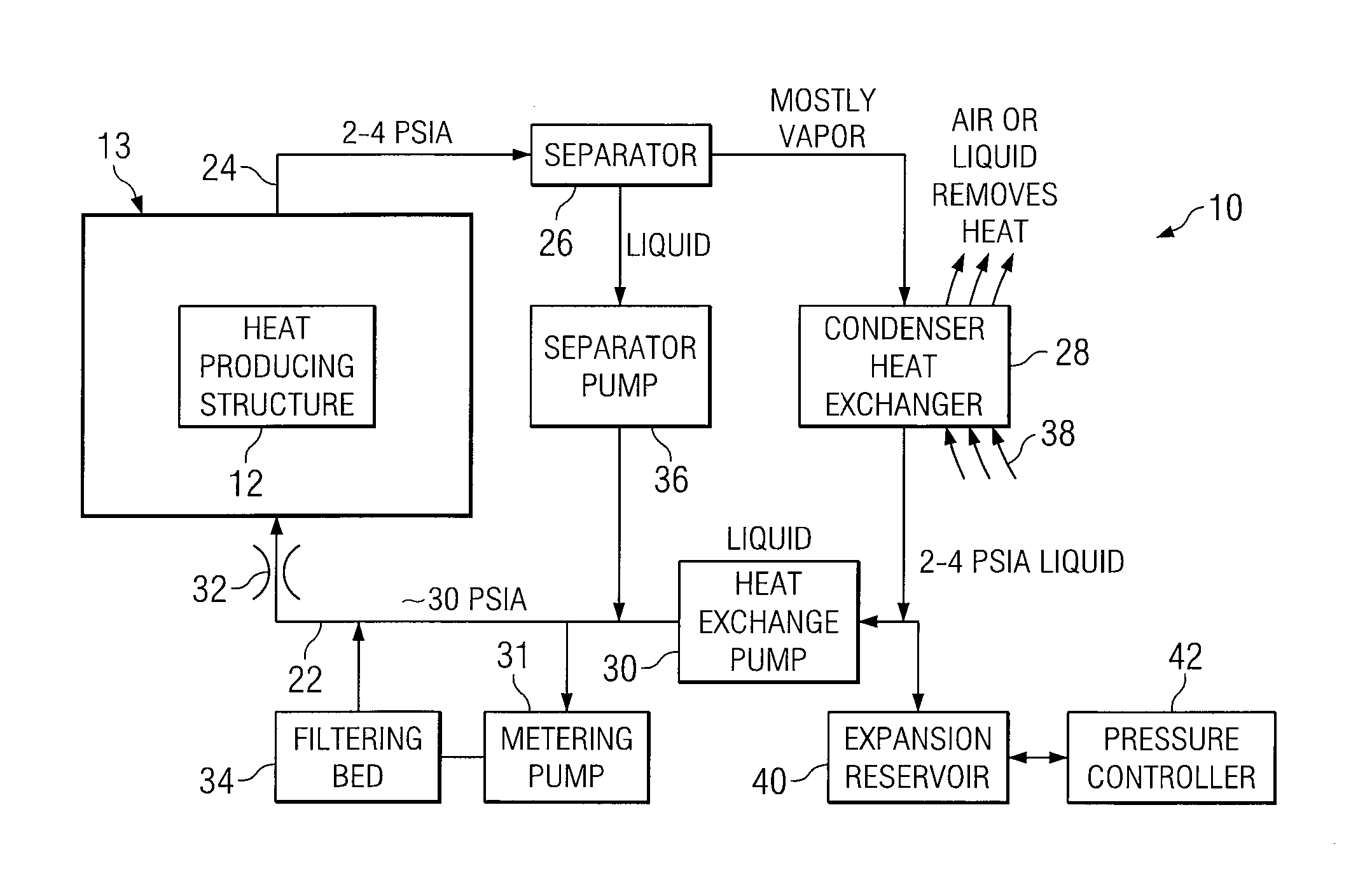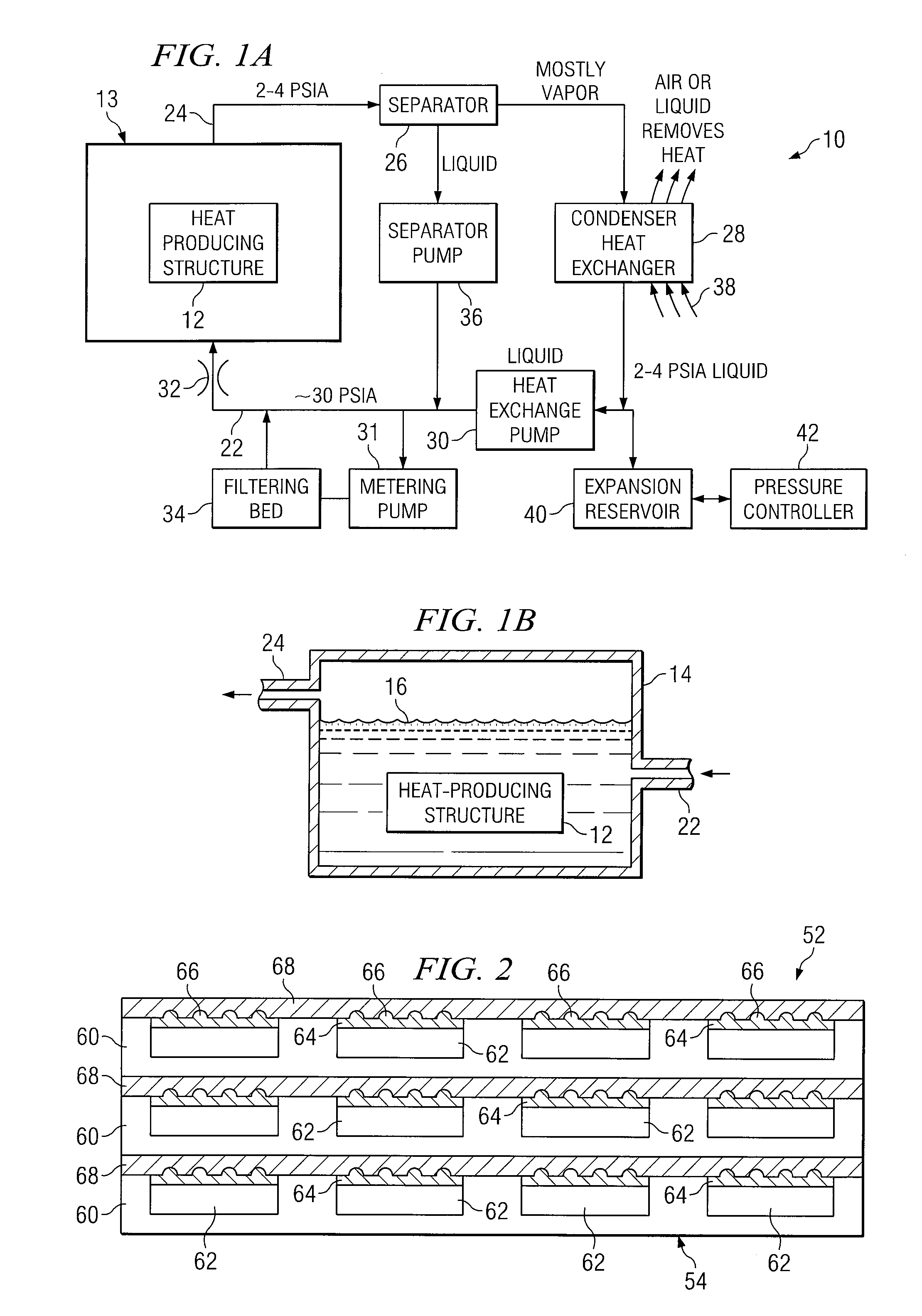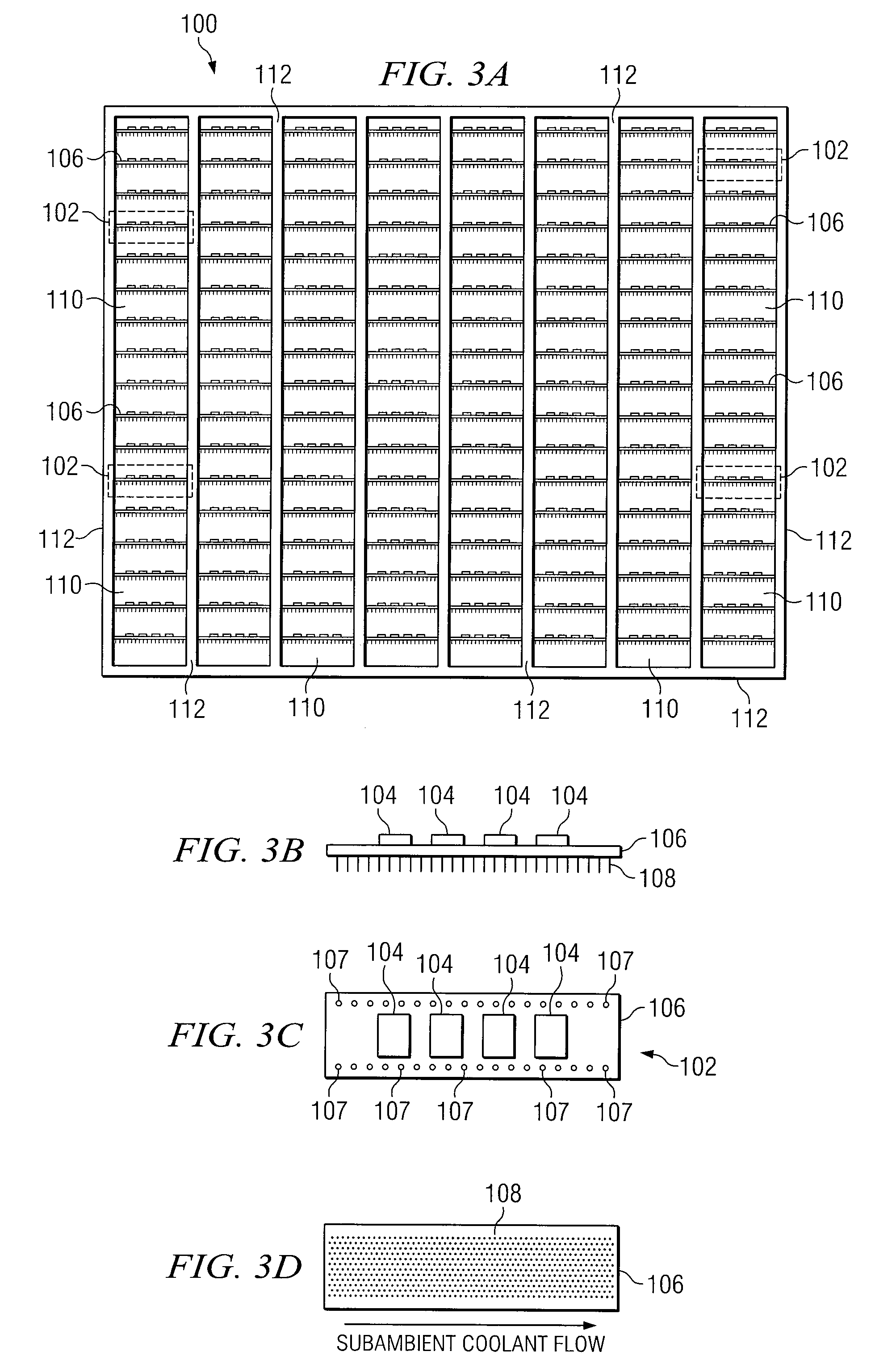Method and Apparatus for Cooling Electronics with a Coolant at a Subambient Pressure
a technology of subambient pressure and cooling electronics, applied in the field of cooling techniques, can solve the problems of large amount of power consumption, large amount of heat produced, and large size of suitable refrigeration units
- Summary
- Abstract
- Description
- Claims
- Application Information
AI Technical Summary
Benefits of technology
Problems solved by technology
Method used
Image
Examples
Embodiment Construction
[0015] Example embodiments of the present invention and their advantages are best understood by referring to FIGS. 1A-4B of the drawings, like numerals being used for like and corresponding parts of the various drawings.
[0016]FIG. 1A is a block diagram of an apparatus 10 that includes a heat-generating structure 12. The heat-generating structure 12 may be, in a particular embodiment, one or more microelectronic assemblies, which may produce an enormous amount of heat that is difficult to cool using conventional techniques. Alternatively, heat-generating structures may include no electronics and / or may not produce excessive amounts of heat. In general, although the teachings of the invention may provide greater benefit to cooling microelectronics that produce excessive amounts of heat, these teachings are applicable to cooling any type of device at high or lower levels of heat-generation. According to the teachings of one embodiment of the invention, heat-generating structure 12 is ...
PUM
 Login to View More
Login to View More Abstract
Description
Claims
Application Information
 Login to View More
Login to View More - R&D
- Intellectual Property
- Life Sciences
- Materials
- Tech Scout
- Unparalleled Data Quality
- Higher Quality Content
- 60% Fewer Hallucinations
Browse by: Latest US Patents, China's latest patents, Technical Efficacy Thesaurus, Application Domain, Technology Topic, Popular Technical Reports.
© 2025 PatSnap. All rights reserved.Legal|Privacy policy|Modern Slavery Act Transparency Statement|Sitemap|About US| Contact US: help@patsnap.com



